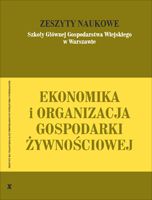Main Article Content
The paper presents differences between Polish balance law and the IAS/ /IFRS as well as their consequences for the financial situation evaluation of the Provimi-Rolimpex Capital Group. Several divergences between Polish balance law and the IAS/IFRS were found, especially in the fixed and current assets, the profit and loss statement as well as in the ratio analysis. These differences were caused by dissimilar valuation or obligation of reclassifying some assets’ positions to different categories or as a result of decrease or increase of some assets, capital or results. The fixed material assets had the greatest impact on the balance, which amounted 77% of the assets’ changes. The fixed material assets, by change the valuation into the fair value, caused increase of equity value by 75.528 thousand PLN. Employment of the IAS/IFRS resulted in implementation of new biology and fixed assets’ positions. The financial result calculated within the Accounting Act was lower by 1.222 thousand PLN than within the IAS/IFRS. Transformation of the financial declaration within the IAS/IFRS, initially made within the Accounting Act rules, resulted in increase of the sale profitability ratio, decrease of total indebtness and equity indebtness ratios. However, assets and equity profitability as well as the liquidity level decreases. There happened no essential changes regarding management effectiveness ratios
Article Details
BEDNARSKI L., GIERUSZ J. (red.), 2001: Rachunkowość międzynarodowa. Polskie Wydawnictwo Ekonomiczne, Warszawa.
BERNACKI A., 2006: Międzynarodowy Standard Rachunkowości 41 "Rolnictwo" a realia jego wprowadzenia w Polsce. Zeszyty Teoretyczne Rachunkowości. Numer Specjalny, Tom 32 (88), Warszawa.
GIERUSZ J. (red.), 2002: Ustawa o rachunkowości a Międzynarodowe Standardy Rachunkowości. Analiza porównawcza. Wydawnictwo ODDK, Gdańsk.
JARUGA A., 2003: W kierunku globalnych standardów rachunkowości. [W:] Międzynarodowe i polskie regulacje rachunkowości w praktyce. Wydawnictwo Difin, Warszawa.
JARUGA A. (red.), 2005: Międzynarodowe Standardy Sprawozdawczości Finansowej (MSSF/MSR) a ustawa o rachunkowości - podobieństwa i różnice. Wydawnictwo Stowarzyszenia Księgowych w Polsce, Warszawa. 2. 3.
Międzynarodowe Standardy Sprawozdawczości Finansowej (MSSF), Tom I i II, 2004. Wydawnictwo International Accounting Standards Committee Foundation, Londyn.
SURDYKOWSKA S.T., 1999: Rachunkowość międzynarodowa. Wydawnictwo Zakamycze, Kraków.
Ustawa o rachunkowości z dnia 29.09.1994 r., DzU nr 121, poz. 591, z późn. Zm.
WALIŃSKA E., 2005: Międzynarodowe standardy rachunkowości. Ogólne zasady pomiaru i prezentacji pozycji bilansu i rachunku wyników. Wydawnictwo Oficyna Ekonomiczna, Kraków.
WASILEWSKI M., 2004: Harmonizacja rachunkowości międzynarodowej na przykładzie MSR-41 "Rolnictwo". Zeszyty Naukowe SGGW - Problemy Rolnictwa Światowego, 15.
Downloads
- Krzysztof Wisiński, The application of motad model in indicating the optimum portfolio structure , Zeszyty Naukowe SGGW - Ekonomika i Organizacja Gospodarki Żywnościowej: No. 60 (2006)
You may also start an advanced similarity search for this article.
- Andrzej Bernacki, Mirosław Wasilewski, Family farm accountancy and its appropriateness in making decision on production , Zeszyty Naukowe SGGW - Ekonomika i Organizacja Gospodarki Żywnościowej: No. 37 (1999)
- Mirosław Wasilewski, The issue of reserves according to the balance law and International Accounting Standard , Zeszyty Naukowe SGGW - Ekonomika i Organizacja Gospodarki Żywnościowej: No. 55 (2005)
- Mirosław Wasilewski, Anna Wasilewska, Seasonal employment cost in individual farms depending on agriculture type of production , Zeszyty Naukowe SGGW - Ekonomika i Organizacja Gospodarki Żywnościowej: No. 91 (2011)
- Mirosław Wasilewski, Magdalena Mądra, THE EFFICIENCY OF INDIVIDUAL AGRICULTURAL FARMS IN RELATION TO DEBT LEVEL AND EUROPEAN SIZE UNIT , Zeszyty Naukowe SGGW - Ekonomika i Organizacja Gospodarki Żywnościowej: No. 64 (2008)
- Mirosław Wasilewski, Aleksandra Pisarska, Financing of fi xed assets from the state treasury (exemplifi ed by public institutions of higher education) , Zeszyty Naukowe SGGW - Ekonomika i Organizacja Gospodarki Żywnościowej: No. 89 (2011)
- Mirosław Wasilewski, Magdalena Forfa, Individual Farmers’ Opinions on Drawning up Cash Flow Budget , Zeszyty Naukowe SGGW - Ekonomika i Organizacja Gospodarki Żywnościowej: No. 97 (2012)
- Mirosław Wasilewski, Anna Wasilewska, The Technological Innovations of Farm and Food Enterprises , Zeszyty Naukowe SGGW - Ekonomika i Organizacja Gospodarki Żywnościowej: No. 99 (2012)
- Mirosław Wasilewski, Anna Wasilewska, The Source of Information Concerning Conducted Innovation of Farm and Food Enterprises , Zeszyty Naukowe SGGW - Ekonomika i Organizacja Gospodarki Żywnościowej: No. 99 (2012)
- Mirosław Wasilewski, Magdalena Forfa, Cash Flow Management vs. Effectiveness of Utilization of Factors of Production in Agriculture Farm , Zeszyty Naukowe SGGW - Ekonomika i Organizacja Gospodarki Żywnościowej: No. 96 (2012)
- Artur Kowalczyk, Mirosław Wasilewski, The evaluation of Dairy Cooperatives' Competitiveness , Zeszyty Naukowe SGGW - Ekonomika i Organizacja Gospodarki Żywnościowej: No. 52 (2004)





